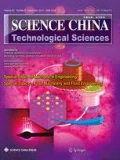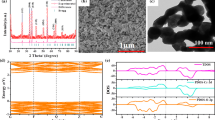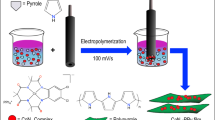Abstract
The search of electrode materials with high electrochemical activity is one of key solutions to actualize both high energy density and high power density in a supercapacitor. Recently, we have developed one novel kind of rare earth and transitional metal colloidal supercapacitors, which can deliver higher specific capacitance than electrical double-layer capacitors (EDLC) and traditional pseudocapacitors. The electrode materials in colloidal supercapacitors arin colloidal supercapacitors aree in-situ formed electroactive colloids, which were transformed from commercial rare earth and transitional metal salts in alkaline electrolyte by chemical and electrochemical assisted coprecipitation. In these colloidal supercapacitors, multiple-electron Faradaic redox reactions can be utilized, which can deliver ultrahigh specific capacitance often larger than one-electron capacitance. Multiple-valence metal cations used in our designed colloidal supercapacitors mainly include Ce3+, Yb3+, Er3+, Fe3+, Mn2+, Fe2+, Co2+, Ni2+, Cu2+, Sn2+ and Sn4+. The colloidal supercapacitors can be served as the promising next-generation high performance supercapacitors.
Similar content being viewed by others
References
Simon P, Gogotsi Y, Dunn B. Where do batteries end and supercapacitors begin. Science, 2014, 343: 1210–1211
Simon P, Gogotsi Y. Materials for electrochemical capacitors. Nat Mater, 2008, 7: 845–854
Chen K, Xue D. Chemical reaction and crystallization control on electrode materials for electrochemical energy storage (in Chinese). Sci China Tech Sci, 2015, 45: 36–49
Chen K, Song S, Liu F, et al. Structural design of graphene for use in electrochemical energy storage devices. Chem Soc Rev, 2015, 44: 6230–6257
Liu F, Song S, Xue D, et al. Folded Structured graphene paper for high performance electrode materials. Adv Mater, 2012, 24: 1089–1094
Liu J, Xia H, Xue D, et al. Double-shelled nanocapsules of V2O5-based composites as high-performance anode and cathode materials for Li ion batteries. J Am Chem Soc, 2009, 131: 12086–12087
Chen K, Xue D, Komarneni S. Beyond theoretical capacity in Cu-based integrated anode: Insight into the structural evolution of CuO. J Power Sources, 2015, 275: 136–143
Conway B E. Electrochemical Supercapacitors: Scientific Fundamentals and Technological Applications. New York: Plenum Press. 1999
Chen K, Sun C, Xue D. Morphology engineering of high performance binary oxide electrodes. Phys Chem Chem Phys, 2015, 17: 732–750
Chen K, Song S, Xue D. Beyond graphene: Materials chemistry toward high performance inorganic functional materials. J Mater Chem A, 2015, 3: 2441–2453
Tyler Mefford J, Hardin W G, Dai S, et al. Anion charge storage through oxygen intercalation in LaMnO3 perovskite pseudocapacitor electrodes. Nat Mater, 2014, 13: 726–732
Naoi K, Naoi W, Aoyagi S, et al. New generation “nanohybrid supercapacitor”. Acc Chem Res, 2013, 46: 1075–1083
Chen K, Liu F, Xue D, et al. Carbon with ultrahigh capacitance when graphene paper meets K3Fe(CN)6. Nanoscale, 2015, 7: 432–439
Bruce P G, Scrosati B, Tarascon J M. Nanomaterials for rechargeable lithium batteries. Angew Chem Int Ed, 2008, 47: 2930-2946
Wang Y, Xia Y. Recent progress in supercapacitors: from materials design to system construction. Adv Mater, 2013, 25: 5336–5342
Lang X, Hirata A, Fujita T, et al. Nanoporous metal/oxide hybrid electrodes for electrochemical supercapacitors. Nat Nanotechnol, 2011, 6: 232–236
Chen K, Song S, Xue D. An ionic aqueous pseudocapacitor system: Electroactive ions in both salt-electrode and redox-electrolyte. RSC Adv, 2014, 4: 23338–23343
Chen K, Xue D. Ionic Supercapacitor electrode materials: a system-level design of electrode and electrolyte for transforming ions into colloids. Colloids Interface Sci Commun, 2014, 1: 39–42
Chen X, Chen K, Wang H, et al. Crystallization of Fe3+ in an alkaline aqueous pseudocapacitor system. Crystengcomm, 2014, 16: 6707–6715
Chen K, Xue D. Formation of electroactive colloids via in-situ coprecipitation under electric field: Erbium chloride alkaline aqueous pseudocapacitor. J Colloid Interface Sci, 2014, 430: 265–271
Chen K, Xue D. Crystallization of tin chloride for promising pseudocapacitor electrode. Crystengcomm, 2014, 16: 4610–4618
Chen K, Xue D. YbCl3 electrode in alkaline aqueous electrolyte with high pseudocapacitance. J Colloid Interface Sci, 2014, 424: 84–89
Chen K, Yang Y, Li K, et al. CoCl2 designed as excellent pseudocapacitor electrode materials. ACS Sustainable Chem Eng, 2014, 2: 440-444
Kang J, Wei S, Zhu K, et al. First-principles theory of electrochemical capacitance of nanostructured materials: Dipole-assisted subsurface intercalation of lithium in pseudocapacitive TiO2 anatase nanosheets. J Phys Chem C, 2011, 115: 4909–4915
Chen K, Xue D. Water-soluble inorganic salt with ultrahigh specific capacitance: Ce(NO3)3 can be designed as excellent pseudocapacitor electrode. J Colloid Interface Sci, 2014, 416: 172–176
Chen K, Song S, Li K, et al. Water-soluble inorganic salts with ultrahigh specific capacitance: Crystallization transformation investigation of CuCl2 electrodes. Crystengcomm, 2013, 15: 10367–10373
Chen K, Chen X, Xue D. Hydrothermal route to crystallization of FeOOH nanorods via FeCl3·6H2O: Effect of Fe3+ concentration on pseudocapacitance of iron-based materials. Crystengcomm, 2015, 17: 1906–1910
Chen K, Song S, Xue D. Faceted Cu2O structures with enhanced Li-ion battery anode performances. Crystengcomm, 2015, 17: 2110–2117
Chen K, Xue D. In-situ electrochemical route to aerogel electrode materials of graphene and hexagonal CeO2. J Colloid Interface Sci, 2015, 446: 77–83
Sun C, Xue D. Chemical bonding theory of single crystal growth and its application to ϕ3’’ YAG bulk crystal. Crystengcomm, 2014, 16: 2129–2135
Sun C, Xue D. Size-dependent oxygen storage ability of nano-sized ceria. Phys Chem Chem Phys, 2013, 15: 14414–14419
Li H B, Yu M H, Wang F X, et al. Amorphous nickel hydroxide nanospheres with ultrahigh capacitance and energy density as electrochemical pseudocapacitor materials. Nat Commun, 2013, 4: 1894
Chen K, Xue D, Komarneni S. Colloidal pseudocapacitor: Nanoscale aggregation of Mn colloids from MnCl2 under alkaline condition. J Power Sources, 2015, 279: 365–371
Chen X, Chen K, Wang H, et al. Functionality of Fe(NO3)3 salts as both positive and negative pseudocapacitor electrodes in alkaline aqueous electrolyte. Electrochim Acta, 2014, 147: 216–224
Chen X, Chen K, Wang H, et al. A colloidal pseudocapacitor: Direct use of Fe(NO3)3 in electrode can lead to a high performance alkaline supercapacitor system. J Colloid Interface Sci, 2015, 444: 49–57
Chen K, Yin S, Xue D. Binary AxB1-x ionic alkaline pseudocapacitor system involving manganese, iron, cobalt, and nickel: Formation of electroactive colloids via in-situ electric field assisted coprecipitation. Nanoscale, 2015, 7: 1161–1166
Chen K, Noh Y, Li K, et al. Microwave-hydrothermal crystallization of polymorphic MnO2 for electrochemical energy storage. J Phys Chem C, 2013, 117: 10770–10779
Sun, C, Zhang Y, Song S, et al. Tunnel-dependent supercapacitance of MnO2: Effects of crystal structure. J Appl Crystallogr, 2013, 46: 1128–1135
Wei W, Cui X, Chen W, et al. Manganese oxide-based materials as electrochemical supercapacitor electrodes. Chem Soc Rev, 2011, 40: 1697–1721
Xu H, Hu X, Yang H, et al. Flexible asymmetric micro-supercapacitors based on Bi2O3 and MnO2 nanoflowers: Larger areal mass promises higher energy density. Adv Energy Mater, 2015, 5: 1401882
Chang J, Jin M, Yao F, et al. Asymmetric supercapacitors based on graphene/MnO2 nanospheres and graphene/MoO3 nanosheets with high energy density. Adv Funct Mater, 2013, 23: 5074–5083
Nataraj S K, Song Q, Al-Muhtaseb S A, et al. Thin, flexible supercapacitors made from carbon nanofiber electrodes decorated at room temperature with manganese oxide nanosheets. J Nanomater, 2013, 8: 3805–3816
Jones T W, Bailey M R, Donnez S W. Elucidation of the discharge mechanism of CuO cathode material in alkaline electrolyte. J Electrochem Soc, 2013, 160: A703–A708
Author information
Authors and Affiliations
Corresponding author
Rights and permissions
About this article
Cite this article
Chen, K., Xue, D. Rare earth and transitional metal colloidal supercapacitors. Sci. China Technol. Sci. 58, 1768–1778 (2015). https://doi.org/10.1007/s11431-015-5915-z
Received:
Accepted:
Published:
Issue Date:
DOI: https://doi.org/10.1007/s11431-015-5915-z




